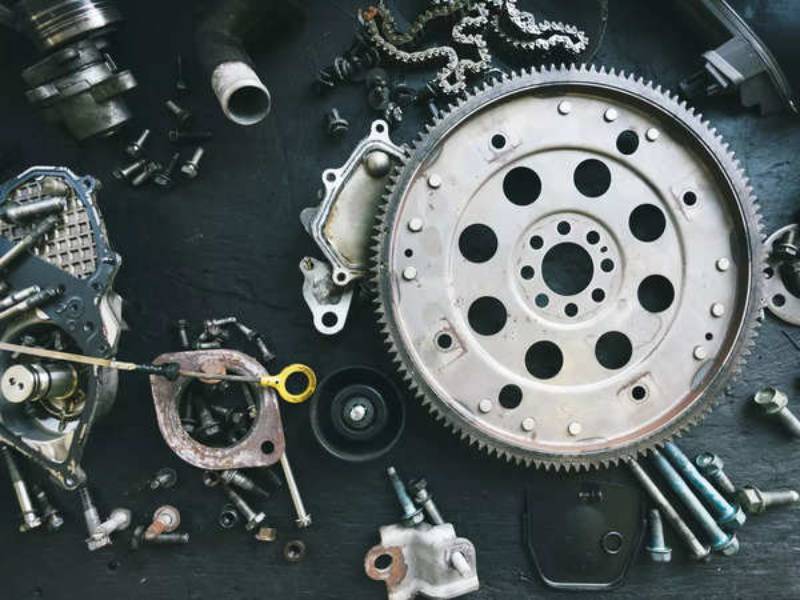The demand for high value-added components for the domestic market significantly increased in 2022–2023, according to data released on Monday by the apex industry body for automotive components, the Automotive Component Manufacturers Association of India (ACMA). This resulted in a record turnover for the country’s automotive components sector of $69.7 billion. Despite exports to North America and Europe slowing down due to concerns about inflation weighing on demand in those countries, growth was nevertheless observed.
Sport utility vehicles (SUVs) in the passenger vehicle market, medium and heavy commercial vehicles, and high-capacity, premium motorcycles and scooters all showed a preference for larger, high-powered vehicles in FY23, with automotive parts suppliers reporting a 32.8% increase in sales to original equipment manufacturers (OEMs) to nearly $70 billion.
Growing domestic auto sales, however, resulted in an increase in component imports, turning the $700 million trade surplus experienced by the Indian auto parts sector in FY22 into a $200 million deficit in FY23. This change was primarily caused by an increase in imports from China, the country’s OEMs’ top source of components outside of India.
From Rs1.36 trillion ($18.3 billion) to Rs1.63 trillion ($20.3 billion) in FY23, component imports increased by 10.9%. According to data provided by ACMA, Asia accounted for 66% of imports, followed by Europe at 26% and North America at 6%. According to the trade group, imports from North America increased by 23%, imports from Europe by 6%, and imports from Asia by 12%.
In contrast, exports increased 5.2% to Rs1.61 trillion ($20.1 billion) in FY22 from Rs1.41 trillion ($19.0 billion). 32% of the exports came from North America, an increase of 8%. Asia grew by 26% and Europe by 31%, both of which saw growth.
With the exception of EV batteries, ACMA data revealed an almost threefold increase in the proportion of electric vehicle parts to overall auto component deliveries, from 1% in FY22 to 2.7% now. Electric two- and three-wheelers account for the majority of EV component sales in India, with electric passenger cars (four-wheelers) accounting for only 1.0–1.5% of all EV sales. Over the past five years, the auto components market has expanded at a compound annual growth rate (CAGR) of 4.1%.
Through the use of a mathematical model, the ACMA, which represents over 800 auto component manufacturers at the tier-1, tier-2, and tier-3 levels, determines its turnover volumes. These quantities are subsequently confirmed with key industry players, including agencies. The government is its primary source for trade data.
“The domestic industry has undoubtedly experienced growth, which is a significant improvement over where we were. The ability to export has also increased. We currently generate $70 billion in income and export $20 billion. In my opinion, the China +1 strategy is succeeding in terms of value creation. We are currently seeing a return on our investments in technology. We can keep up with the trend of many OEMs that are looking to new technologies by giving them the technical solutions they need. The majority of the value adding truly starts there. Due to the rising popularity of EVs and the general trend toward their supply, there is increased activity in this area. Sunjay Kapur, president of the ACMA, stated, “I see it continuing, and we’re going to invest more in products for EVs.”
Kapur anticipates a gradual reduction in India’s reliance on China for the importation of a variety of components, including engine parts, vehicle chassis, suspension and brake systems, and electronics, which has stayed consistent at 20%-30% of all its total imports for the last five years. “Even as we expand domestic volumes, we anticipate that this reliance will decrease. Our trade deficit has drastically decreased, he claimed.
Due to large investments made by local manufacturers to increase the nation’s capacity for passenger vehicles, ACMA anticipates that the auto components sector will continue to expand at a strong double-digit rate in FY23. In value terms, passenger cars account for 45% of total auto component sales in India, followed by the CV industry at 25% and practically two-wheelers at 20%.
- Nani will cast in Mahabharata, the dream project of SS Rajamouli - April 28, 2025
- Study says, existence of earth-like exoplanets across the universe has been discovered by astronomers - April 28, 2025
- A new McCrispy Strip and creamed chili dip from McDonald’s take dipping to a whole new level - April 25, 2025



